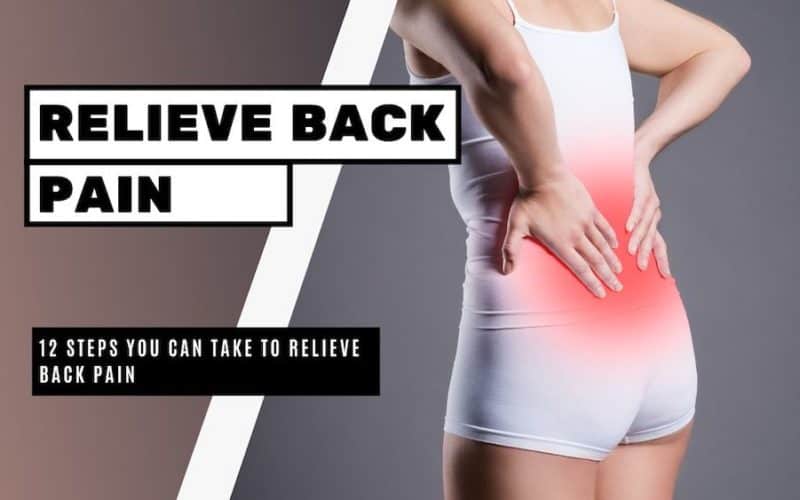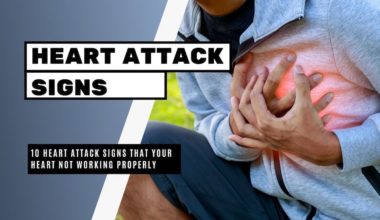If you have back pain, you are not alone. Nearly 80% of Americans will experience back pain, accounting for a large percentage of doctor visits each year. In this article, you will know what you need to do to relieve back pain fast.
Table of Contents
What Causes Back Pain?
Back pain, while a common complaint, isn’t a normal thing. It is your back’s way of getting your attention; before you can relieve back pain, you need to understand the causes of back pain.
Conditions commonly to back pains are ligament strain or muscle. It caused by sudden movement or repeated heavy lifting. Lower back pain results in cancer of the spinal cord and it is a common cause to visit a doctor.
Many causes of back pain are reversible, such as obesity, poor posture, poor quality footwear with too much time on your feet on an unforgiving surface, and sprains or strains due to an injury such as improper lifting techniques or a vehicle accident. Poor sleep habits and stress can add to the discomfort.
Some back pain causes, however, may require a visit to a doctor for evaluation. These include disc bulging and herniation which can lead to a pinched nerve in the spine and a disease process such as arthritic changes.
In these cases, you will need the help of a professional to relieve back pain. Luckily, these cases aren’t as widespread as the more common, reversible ones.
Steps You Can Take to Relieve Back Pain
Since the majority of back pain is caused by injury, obesity, poor posture, and other lifestyle issues, there are many ways to address it. Try some of these tips to relieve your back pain.
1. Improve your posture
This is one of the biggest contributors to back pain; slouching causes stress to the spine, resulting in pain and causes of muscle pain.
You should try to square your shoulders, raise your head, and suck in your stomach. If you find yourself habitually slouching, you may need a back brace to keep your back and shoulders straight.
A back brace is also helpful to keep your back in proper alignment for lifting. Lastly, as we have always been taught, life with your legs, not your back.
2. Physical therapy
If your back pain is from an injury, you may consider making a few appointments with a physical therapist to regain your strength and mobility.
Physical therapists can also give you a list of back pain relief exercises and stretching techniques to follow at home to improve your back pain. Physical therapists are also good with any kind of joint pain treatment.
3. Chiropractors
A chiropractor is a doctor who specializes in exercises for joints pain relief and is specially trained in techniques to help you relieve your back pain. Chiropractors use gentle traction and adjustments to realign your spine naturally, without medications or invasive techniques.
They can work alongside your physical therapist for a complete back pain treatment plan. They are more useful for injuries that involve the spinal function itself.
4. Message therapy
Massage therapists are trained to palpate muscle groups and soft tissue, making them a go-to choice for pain or injury that involves strains or sprains of muscles in the back. A study published in Pain Medicine by researchers from the University of Kentucky and Indiana University suggests that massage can help individuals with lower back pain.
A massage therapist can work closely with your chiropractor and physical therapist for back pain relief. Also, you can consider acupuncture to ease your pain. Because some of the studies have expressed promise that acupuncture could be better than most pain medications.
5. Ice and heat therapy
Many people are confused as to when to ice an injury, and when to use heat. You can use ice and heat therapy for back pain treatment at home.
It’s really very simple: to improve back pain, use ice for up to 48 hours after the pain begins to combat swelling and inflammation, then switch to heat to ease muscles and soreness.
6. Stay active
While rest was often prescribed for back injuries and pain in the past, it’s now recommended that you should be as active. Activity, like walking, swimming, and stretching are good exercises for the lower back pain relief.
Staying active is also a great way to stop pain before it begins, keeping you in shape and limber as well as encouraging weight loss.
7. Maintain a healthy weight
A key factor in back pain is being overweight. Every extra pound that is carried on the body increases strain to the muscles and ligaments in the back.
The extra weight leads to compensating postures, such as slouching, which can ultimately lead to arthritis, degenerative disc disease, disc herniation, and curvature of the spine.
Almost one out of every three people who are overweight complain of back pain. So, if you want to relieve back pain then you must need to lose weight.
8. TENS units
A TENS unit (Transcutaneous Electrical Nerve Stimulation) provides gentle waves of extremely low voltage, mild pulses of electricity. It is totally pain-free, described as a mild tingling at best.
A TENS unit blocks the pain signals in your nerves which ultimately relieve back pain. You can rent them, purchase them online, or go to a physical therapist or chiropractor to have treatments done in the office.
9. Improve your sleep
Sleeping poorly can result in back pain, so it is important to make sure that you having better sleep every night. Make sure your mattress is keeping your spine in natural alignment and consider sleeping with a pillow between your knees if you are a side sleeper, or with a pillow under your knees if you sleep on your back.
10. Over the counter medications
Although you don’t want to take over the counter medications for extended periods of time, taking ibuprofen or naproxen sodium can relieve back pain while reducing swelling and inflammation from an injury. There are also pain patches that rely on lidocaine to numb pain or “icy hot” sensations to soothe painful muscles.
11. Injections
Your physician may opt to inject a steroid or pain blocker directly into the affected areas of your back.
12. Prescription medications
Your doctor may need to put you on prescription medications, such as a muscle relaxer, to help relieve back pain and make you comfortable. He or she can prescribe large dosage ibuprofen, tramadol, and if need be, opioid pain relievers.
Always proceed with caution if you are prescribed an opioid; it is easy to become addicted. Never stay on an opioid for more than a few days to a week. Some doctors may prescribe antidepressants to combat back pain.
Back surgery should be the last choice and only considered if all other treatment plans have failed. You should always try to ease your back pain without surgery if at all possible.
Surgery is a very invasive procedure that will keep you out of commission for an extended period of time, and many times it fails to relieve back pain in the long run.





